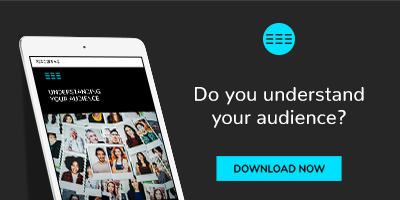As its name suggests, psychographic segmentation is a form of segmentation that groups consumers and/or customers according to various psychological factors. Unlike demographic, geographic or behavioural segmentation that deal with factors such as age, income, location and buying habits, psychographic segmentation delves into mental and emotional factors that drive consumers’ behaviours and decision-making.

Related content: Understanding Your Audience [Free Online Guide]
These psychographic characteristics include:
Personality: this can include a variety of factors from introverted to extroverted, optimistic to pessimistic, open or close-minded, agreeable or antagonistic, conscientious to neurotic.
Attitudes and values: these are the beliefs, opinions and views that influence a buyer’s behaviour. This can include cultural values and attitudes, political opinions, and religious beliefs/views.
Lifestyle: from the job(s) they perform to how they spend their time and the brands they buy (e.g. consumers who buy eco-friendly products may live a different lifestyle to consumers who gravitate towards luxury brands).
Social status: while social status is usually dictated by income and grouped into low, middle and high-income bands, this characteristic can also apply to specific people within a business hierarchy, such as C-suite.
Activities and interests: reasonably self-explanatory, this includes extra-curricular hobbies as well as interests both inside and outside the office, from the type of exercise they might do to their career-related interests, the TV shows they watch and the social media pages, brands and influencers they engage with.
Priorities, goals and motivations: what are the goals of your customer and/or target market? And what motivates them to strive for those goals? Similarly, someone who prioritises their career and puts it first will behave differently and have different goals and motivations than someone who prioritises work-life balance or family.
How do you segment psychographically?
When creating psychographic segments of your market or customers it is often a case of you don’t know what you don’t know. That is, it is dangerous to make assumptions about the psychographic characteristics of your market or customers and then try to validate them in a survey. This is why we recommend conducting qualitative research first, usually in the form of focus groups and one-to-one interviews to uncover different types of psychographics that exist in your market or customer base without relying on assumptions, guesswork, or pre-existing biases. This qualitative research is also useful for creating marketing personas later.
Once you have established the various psychographics of your market or customers, you can then create a survey that seeks to validate and quantify your findings. This will help you understand the size of your psychographic segments and how valuable they are to your brand.
Why use psychographic segmentation over other types of segmentation?
Like any segmentation, psychographic segmentation has a time and place. Where demographic segmentation is useful for targeting a particular cross-section of customers, or geographic segmentation for targeting customers in a particular catchment area, psychographic segmentation builds a powerful understanding of the mindset of your key audiences.
With it you can:
- Adapt your marketing to speak to consumers’ personalities, values, interests and motivations.
- Improve your brand positioning to appeal to key audiences.
- Better understand how the market perceives your product or service.
- Reach customers on their preferred channels and/or platforms.
- Attract more qualified leads.
- Create detailed buyer personas.
What are the cons of psychographic segmentation?
Time required: while some types of segmentation can be implemented quickly using customer data and surveys, psychographic research requires more time. The research is broken into two phases, the first being a series of interviews and focus groups and the second being a survey to quantify the findings from the first phase.
More difficult to define: because we’re dealing with personality and character traits, these can be difficult to measure and quantify. Similarly, depending on the skill of the researcher conducting the interviews and focus groups there is always a risk of them misunderstanding or misinterpreting responses from interviews and focus group members. The good news is, most qualitative researchers are trained to avoid this.
“It can be hard to uncover someone’s emotive reasoning and why they do what they do. It takes practice,” says Jackson Humphries, a Senior Research Consultant at Perceptive. “People will often post-rationalise why they purchase something based on more functional aspects such as performance and specs, but often the brand and their psychographics play a bigger role than they are consciously aware of, which is important to tease out.”
Smaller sample sizes: focus groups and interviews are more time intensive, meaning the sample of people will be smaller, and there is a risk they may not accurately reflect your market or customer base. This is why we recommend a combination of focus groups and interviews; focus groups to get the greatest cross-section of people, and interviews to dive deeply into individual psychographics. Moreover, running a qualitative survey following the interviews and focus groups helps researchers understand the accuracy of their findings and whether they truly reflect your market or customer base.
Learn more about the power of segmentation and how it enhances marketing and cut-through with our all-in-one guide: Understanding Your Audience.
